I photographed Namibia's remote desert after ultra rare rains transformed it into an oasis. It's a trip I'll never forget.
Jay Caboz

- In early 2021, unexpected rains transformed the arid Namibian desert into an oasis.
- I packed into a 4x4 to travel 5,600 miles and photograph this now lush landscape.
Intense sun and wind make Namibia a dry, dusty place. But once-in-a-decade rainfall transformed it into a green oasis, which I photographed on a 5,600-mile road trip.
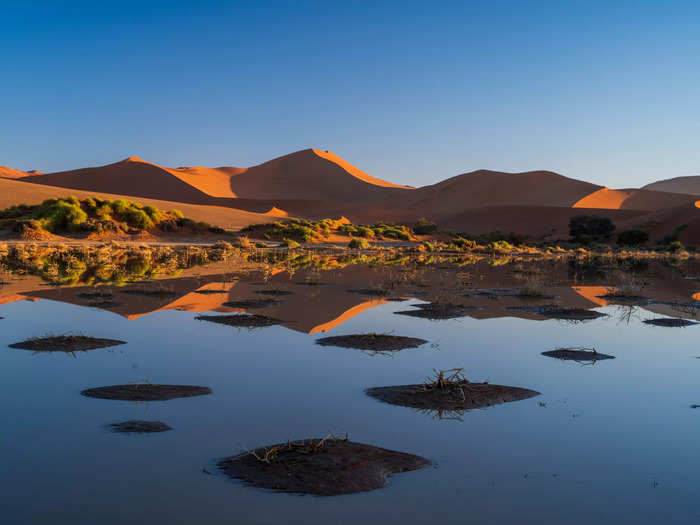
With about 17% of the country's land enclosed in national parks, Namibia is home to jaw-dropping scenery. The arid landscape can be harsh, but when it rains, which happens once every decade, it transforms into something else entirely.
I, along with three other photographers, packed into a 4x4 to document the soaring red dunes, grassy savannas, and 3,000-year-old baobab trees.
Our first stop was the plains of Namib-Naukluft National Park where a herd of wild horses lives.
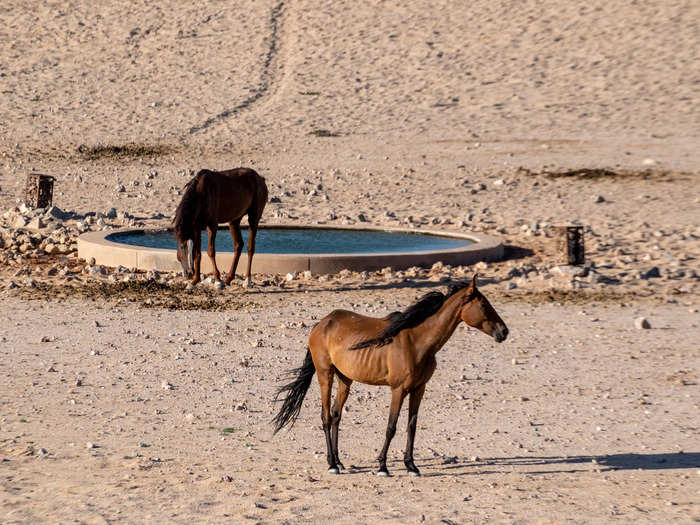
Known to locals as the ghost horses of Namibia, these animals often only show themselves by leaving tracks behind for farmers.
I was lucky enough to catch the ghost horses roaming in small groups as they came to drink from a watering hole.
The herd's origins are shrouded in mystery.
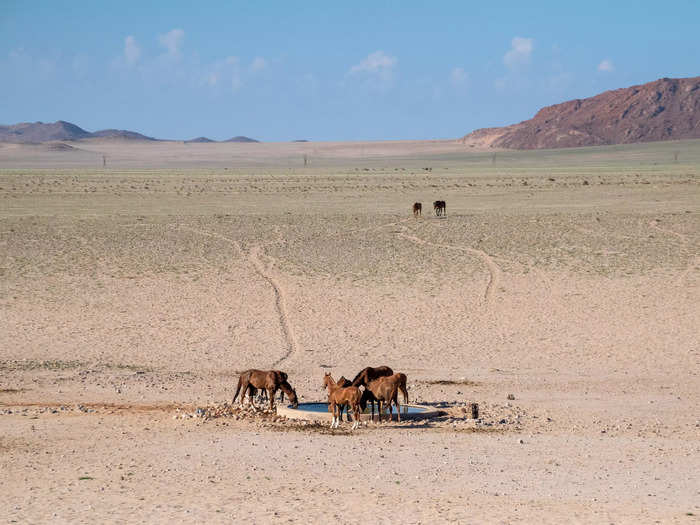
One theory believes they were soldier horses that scattered onto the plains at the start of World War I. Another suggests they were runaways from a stud farm.
Regardless of how they got here, the horses conquered these arid plains, though their numbers declined from 230 to about 70 following years of drought.
They live on thanks to concerned environmentalists, and I was astounded to see how they have adapted to this harsh environment.
Next, we camped on the Klein-Aus Vista farm where I experienced some of the clearest skies I've ever seen.
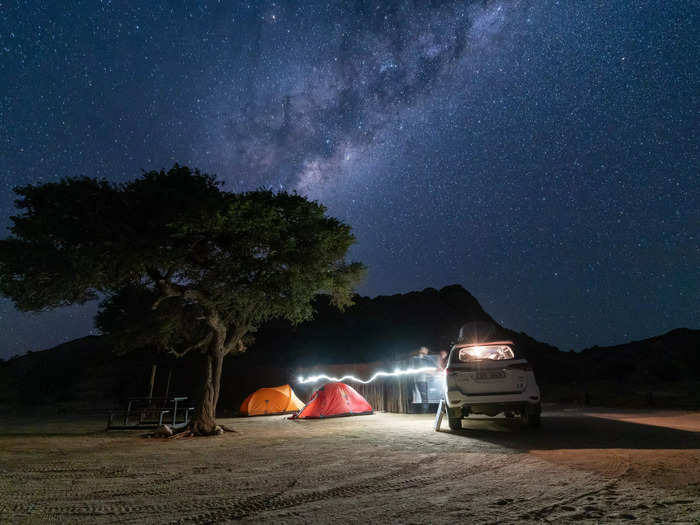
Camping culture in Namibia is big business. From renting 4x4s with roof tents to ground tent pitching, most facilities offer the choices of camping or even glamping. This not only cuts costs but makes for some close encounters with nature.
Our second stop was Kolmanskop, an abandoned diamond mine town that was left to erode.
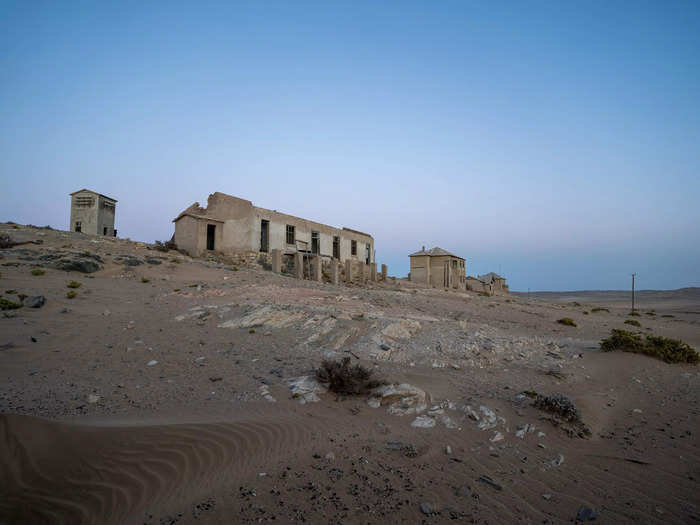
In 1908, a town called Kolmanskop, 8 miles east of the harbor town of Lüderitz, emerged as an epicenter of the Namibian diamond rush. Four years later, the town was producing a million carats a year, equivalent to 11.7 percent of the world's total diamond production.
Ultimately, however, the miners exhausted the reserves, and the town was abandoned.
Kolmanskop's last inhabitants left between 1956 and 1960, leaving it a ghost town of eerie, sand-filled houses.
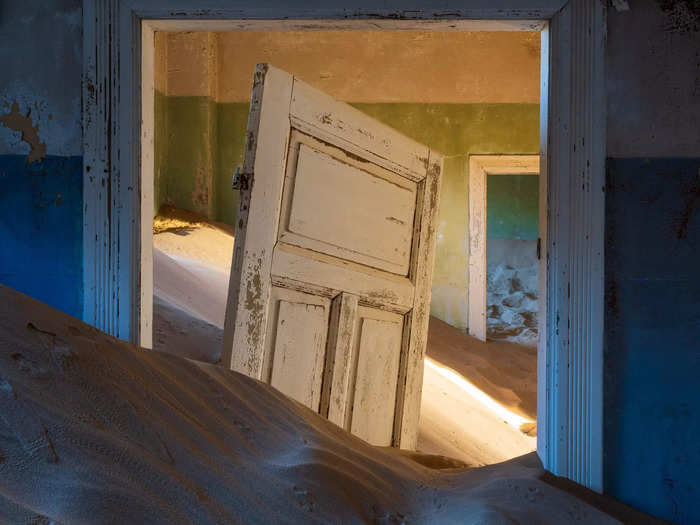
The remains made for a ghostly photo-opportunity in the morning light, when the sun's rays filtered through broken windows and empty door frames buried in the sand.
These days, Kolmanskop is a tourist attraction drawing between 30,000 and 35,000 visitors a year.
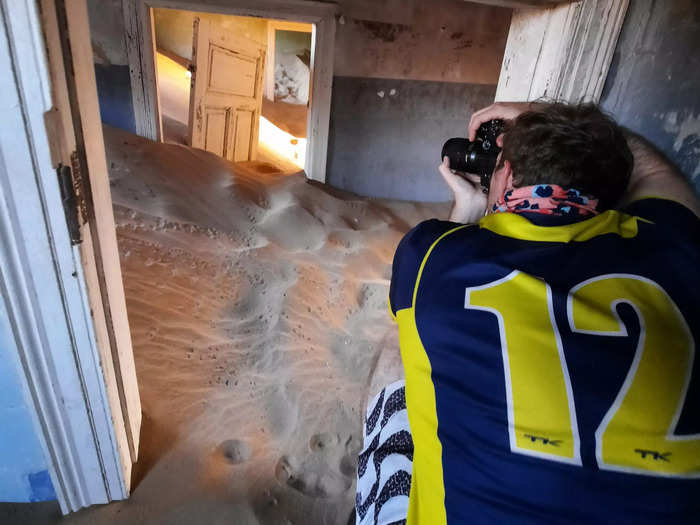
To visit, you need a permit from the security gate at the entrance, or at the Lüderitz Safari and Tours offices in Lüderitz.
Walking through town you can find anything from abandoned baths to a bowling alley.
The next leg of our journey took us 300 miles north to the iconic Sossusvlei in Namib-Naukluft National Park. The formerly dry desert was now dotted with lakes of rainwater.
The Namib-Naukluft National Park is home to the famous Sossusvlei pan, one of the most famous landmarks known for high orange sand dunes that reach almost 1,000 feet.
The area stretches some 30 miles and only receives water when it floods once a decade.
While we saw signs of greenery driving up, this was the first time we saw the full impact of the unseasonal Namibia rains.
To reach the pans, you must trek through miles of desert and hard clay pans. I was surprised by how tough it was to walk through.
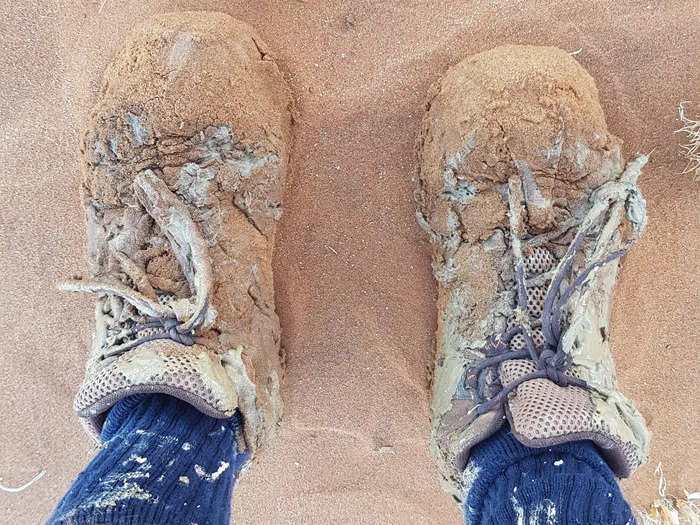
If you thought walking in the sand was tough, you should try walking in wet mud.
Because of the rains, the salt pans were transformed into slick mud baths and the journey was difficult and left my boots caked in thick wet clay, which was nearly impossible to remove.
Where the Namib-Naukluft National Park dried up, we found massive plains of mud-cracked clay.
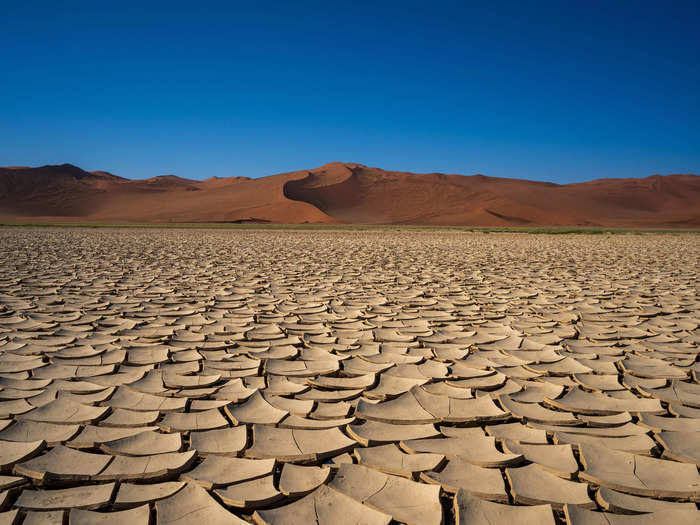
There were miles of fields of dried clay at the bottom of the dunes. I was surprised to hear an extremely therapeutic crackling sound as I walked across it.
During the day, the heat was intense. We took a dip in a recently flooded Sesriem Canyon.
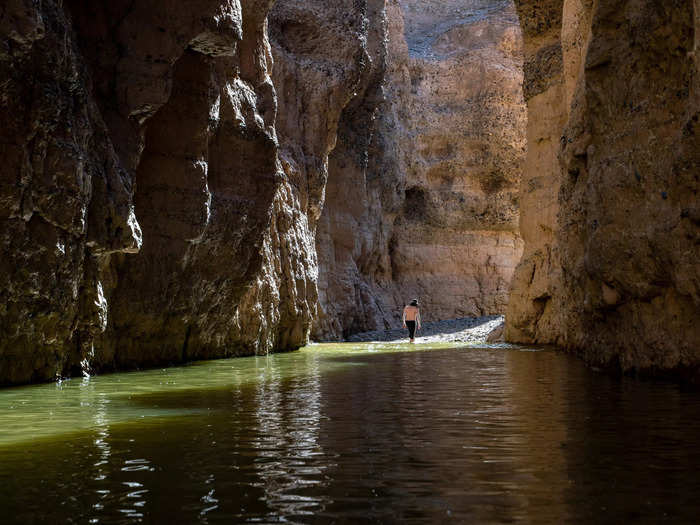
With temperatures hitting 104 degrees Fahrenheit, we took advantage of the rainfall and swam in the Sesriem Canyon, near our campsite.
Carved out of the natural sedimentary rock by the Tsauchab River, the canyon was about half a mile long and up to 100 feet deep in some areas.
Another famous destination in Namib-Naukluft National Park is Deadvlei, a unique landscape with 900-year-old dead trees that is a paradise for photographers.
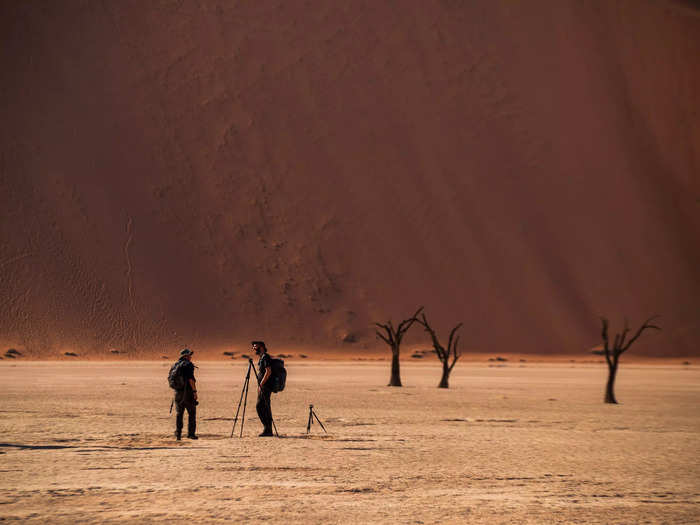
Found 1.8 miles from the Sossusvlei pan is the famous Deadvlei pan. Deadvlei means "dead marsh."
A spectacular array of skeletal acacia trees provide a focal point for the stark contrast between the bleached-white pans, rusty dunes, and deep blue sky.
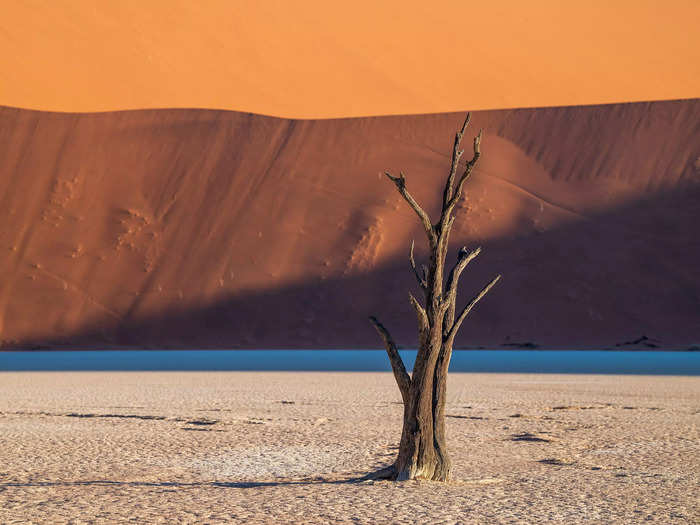
It was a hot dusty trek to get to Deadvlei but the scenery was spectacular, especially at sunrise and sunset when the light plays on the dunes and trees.
We spent hours photographing the 900-year-old trees as their shadows hit the white pan floor.
On our way back, we startled an oryx.
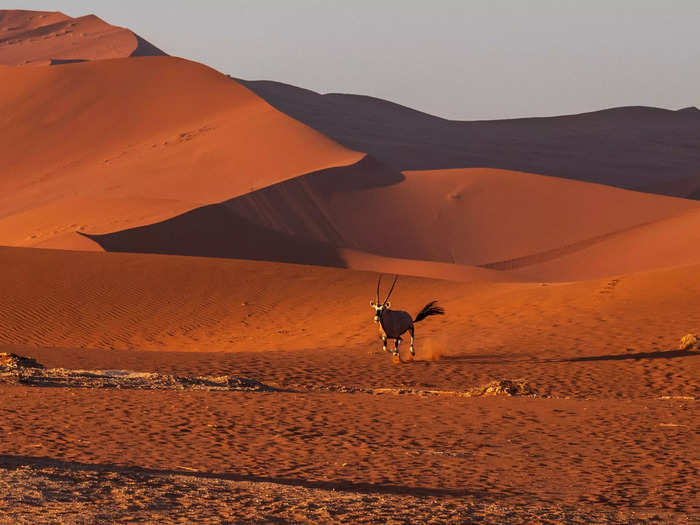
The oryx is Namibia's national animal, recognized for its striking horns and contrasting colors. They're so common, we eventually nicknamed them the chickens of the desert.
They are quite shy, so we learned quickly to keep our cameras handy.
At our next camp, a strand wolf, otherwise known as a brown hyena, invaded.
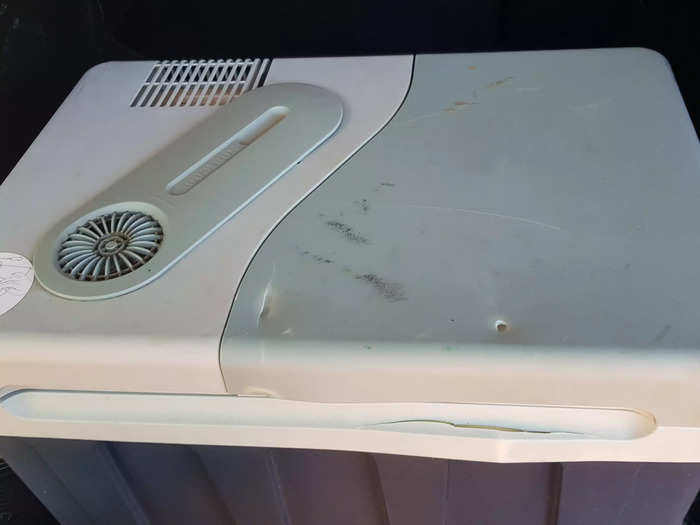
We continued our journey at Sesriem Campsite, and on our last night, got closer to nature than expected.
Brown hyenas have an incredible sense of smell, but we didn't expect one to enter our camp so brazenly. The hyena came sniffing and started chewing our refrigerator.
We jumped out of our tents just in time to chase it away, but large holes were left as a gentle reminder to be wary of nature when it is on your doorstep.
Our journey continued north, crossing the Tropic of Capricorn.
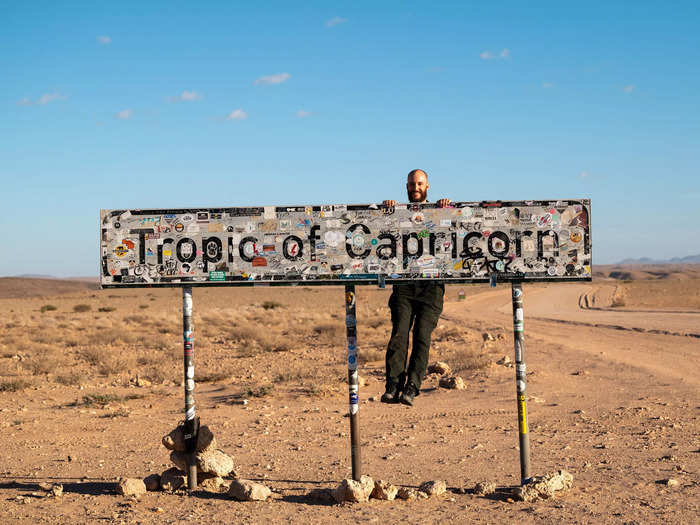
The Tropic of Capricorn is the southernmost circle of latitude when the sun is directly overhead during the Southern Hemisphere's summer solstice on December 21.
On the 233-mile journey between Sossusvlei and Walvis Bay, it's a spot to rest and grab some fun snaps in front of the colorful sign.
From Walvis Bay, we traveled to the Spitzkoppe Mountains.
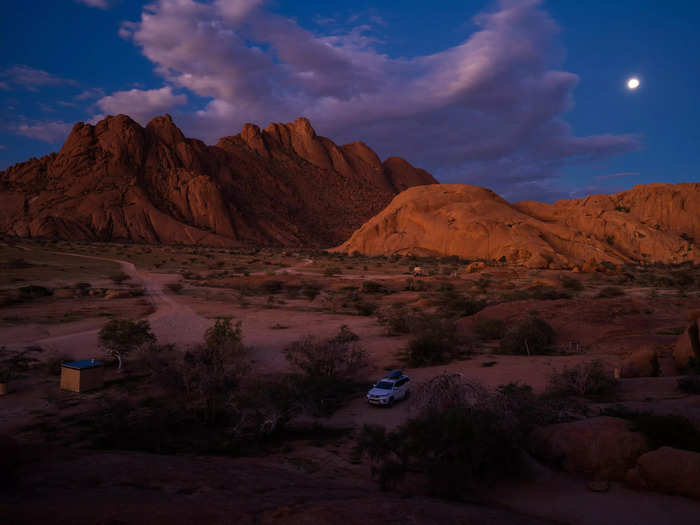
The Spitzkoppe is a range of soaring granite peaks located between Windhoek and Swakopmund in the Namib Desert. Their distinctive silhouette is reminiscent of the Alps, earning the nickname, the Matterhorn of Namibia.
Steeped in antiquity, it is the home of ancient Bushmen paintings, believed to date back 2,000 to 4,000 years. It was also a filming location for Stanley Kubrick's "2001: A Space Odyssey."
A spur-of-the-moment decision then took us to the seaside town of Swakopmund on the west coast of Namibia for a helicopter tour.
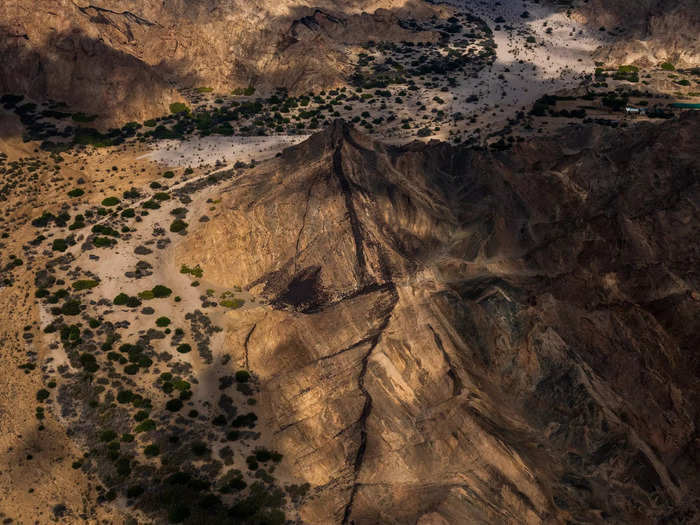
We flew over one of the oldest landscapes in the world, known as the Moon Landscape, which was a filming location for "Mad Max: Fury Road."
The change in perspective over this intimidating, yet magnetic terrain, was extraordinary.
The next leg took us north to Etosha National Park, known for its dry grasslands that were unusually lush.
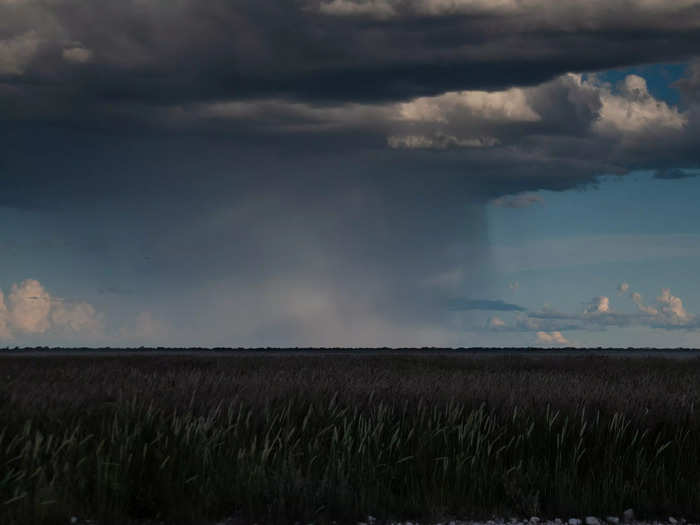
Normally, Etosha is as dry as the African bush can get. But when we visited, it was transformed into one of the largest rolling open plains of lush grass I've ever seen.
A highlight of our Etosha adventure was meeting a curious black-backed jackal that came to visit every night.
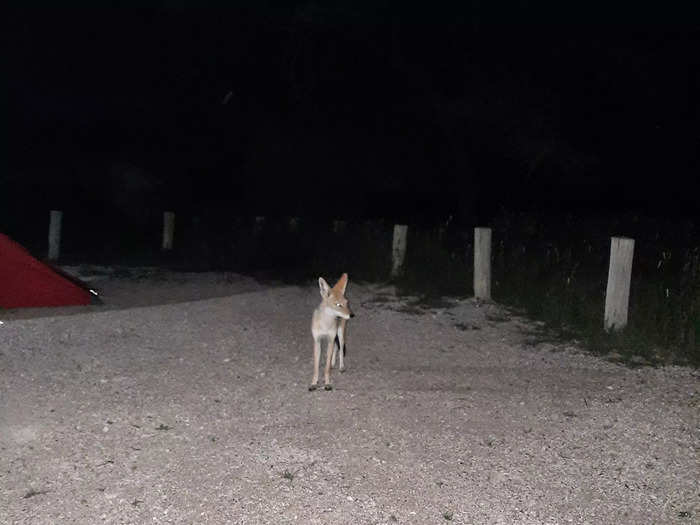
At Okaukuejo Camp, we took advantage of a floodlit waterhole where guests can enjoy the sights and sounds of wildlife roaming at night.
We moved on from Etosha, traveling north to the Epupa Falls.
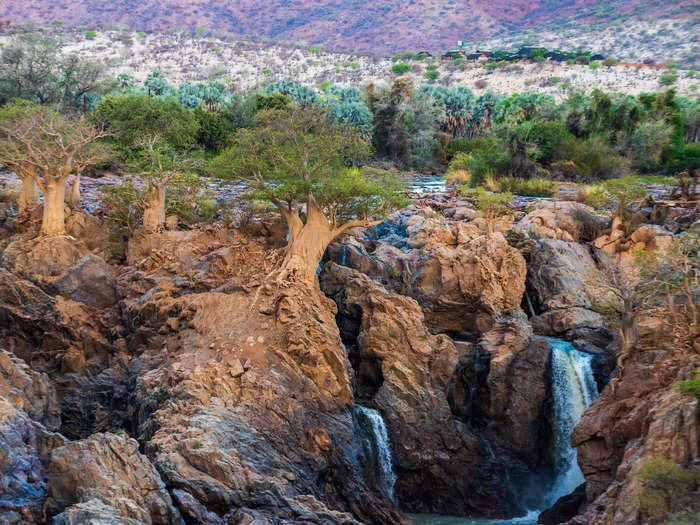
At Epupa Falls, baobab trees cling to the cliffs on the banks of the Kunene River, which forms the border between Namibia and Angola.
While you'll have to travel far to get here, the destination is worth it. Time takes on a different meaning and you could spend hours watching thousands the water flow past the roots of giant baobab trees, which can live for as long as 3,000 years and are native to Africa. It was unlike any place I've ever visited.
300 miles south, we reached our next stop: ǀUi-ǁAis, a UNESCO World Heritage Site.
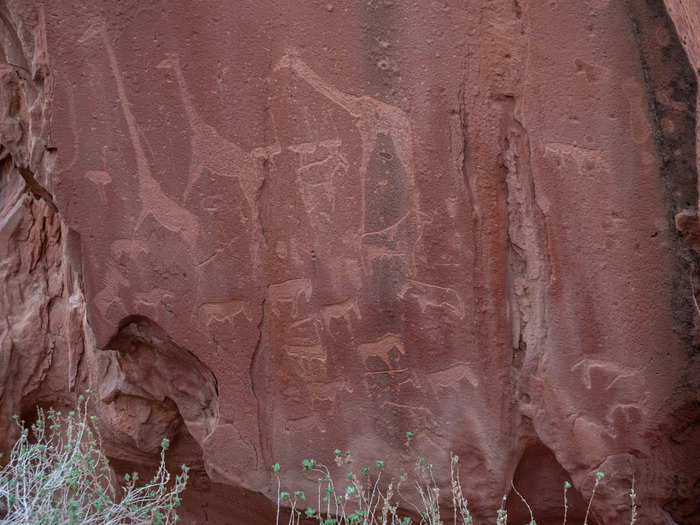
Also known as Twyfelfontein, ǀUi-ǁAis was the first place in the country to be named a UNESCO World Heritage Site in 2007.
It has been inhabited for more than 6,000 years, first by hunter-gatherers and later by Khoekhoe herders who used it as a place of worship.
Some 2,500 rock carvings were left behind, including at Twyfelfontein Lodge, where we stayed. We found the engravings a short walk from the lodge's reception nestled between large boulders. They were well preserved, standing out on the rock face in the hot Namibian sunlight.
Our next stop was the Madisa campsite in magnificent Damaraland amid unusual rock formations.
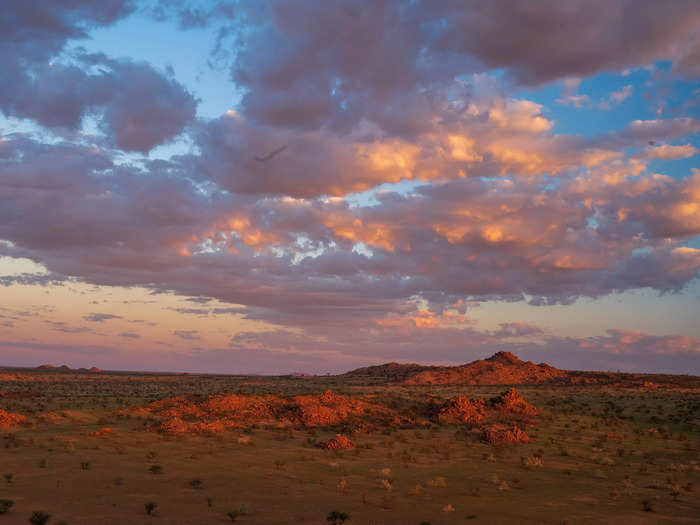
The campsite had a radiant look out from the top with a 360-degree panoramic view of lush green savannas and vibrant crimson rocks.
I took full advantage of the scenery and spent a few hours at this spot past sunset and into the night stargazing under the moonlight.
Our final stop was at the Bagatelle Kalahari Lodge near striking red dunes.
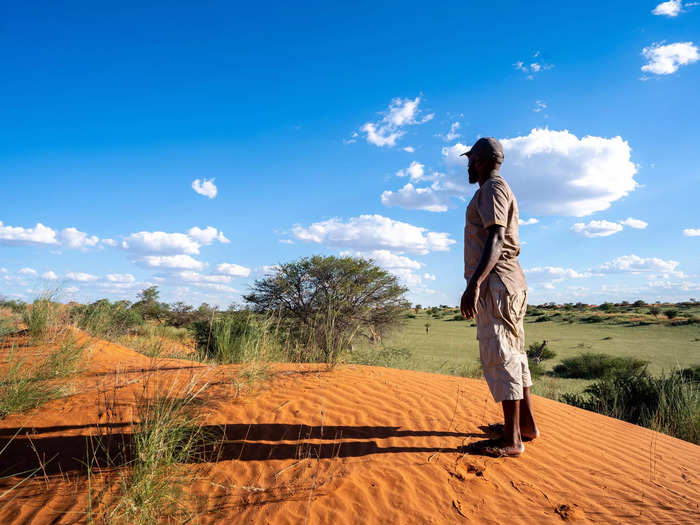
People from around the world visit the Kalahari Desert for its dunes that take on a rich color due to the high iron oxide content in the sand.
We found it covered in verdant fields of lush waist-high grass during an afternoon safari.
Dotted between the savanna and dunes were beautiful acacia trees attended by many animals.
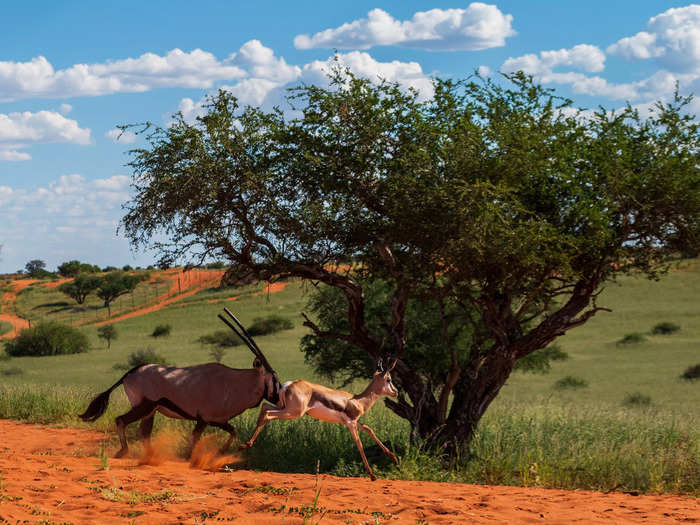
I spotted giraffe, kudu, zebra, oryx, and two white rhinos named Rudolph and Grace.
Bagatelle works in collaboration with the Cheetah Conservation Fund (CCF) and acts as a sanctuary for the animals.
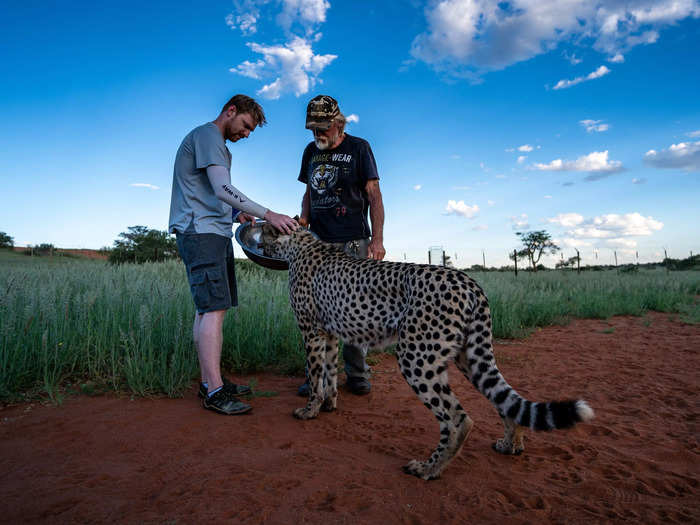
There were six orphaned cheetahs living here that cannot be reintroduced into the wild and are instead looked after by the staff. You can pay for a tour to see these elegant predators up close, and the proceeds will go back to supporting them.
We loved the Kalahari so much, we added an extra night to further relish in the experience.
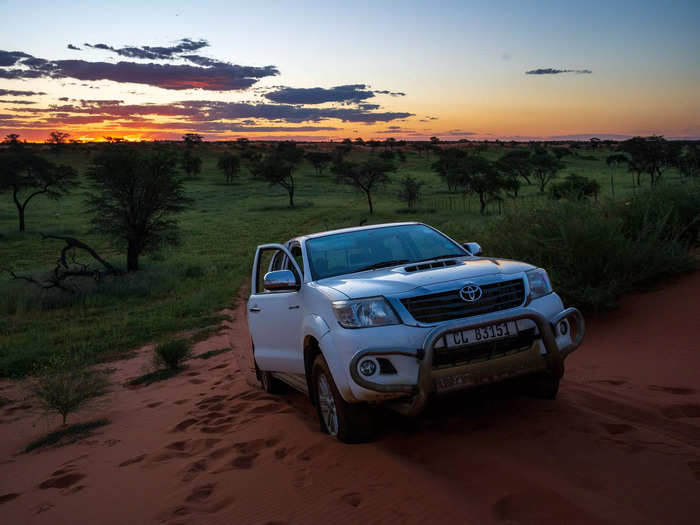
On our last day, we drove through even more green, lush savannas and towering dunes. As sunset hit, we found a peaceful spot to reflect on our grand adventure and the extraordinary transformation of the Namibian landscape.
But after two weeks of travel, it was time to go home.
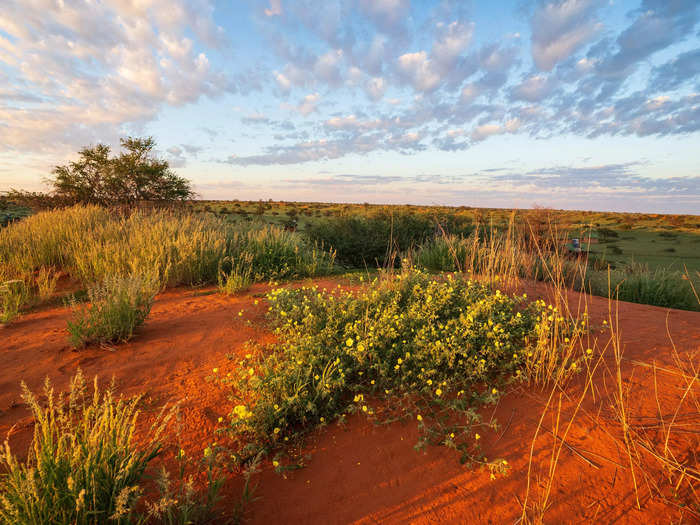
It was the perfect end to a two-week trip and an almost 5,600-mile journey through one of the wildest and most beautiful countries in Africa.
READ MORE ARTICLES ON
Popular Right Now
Advertisement